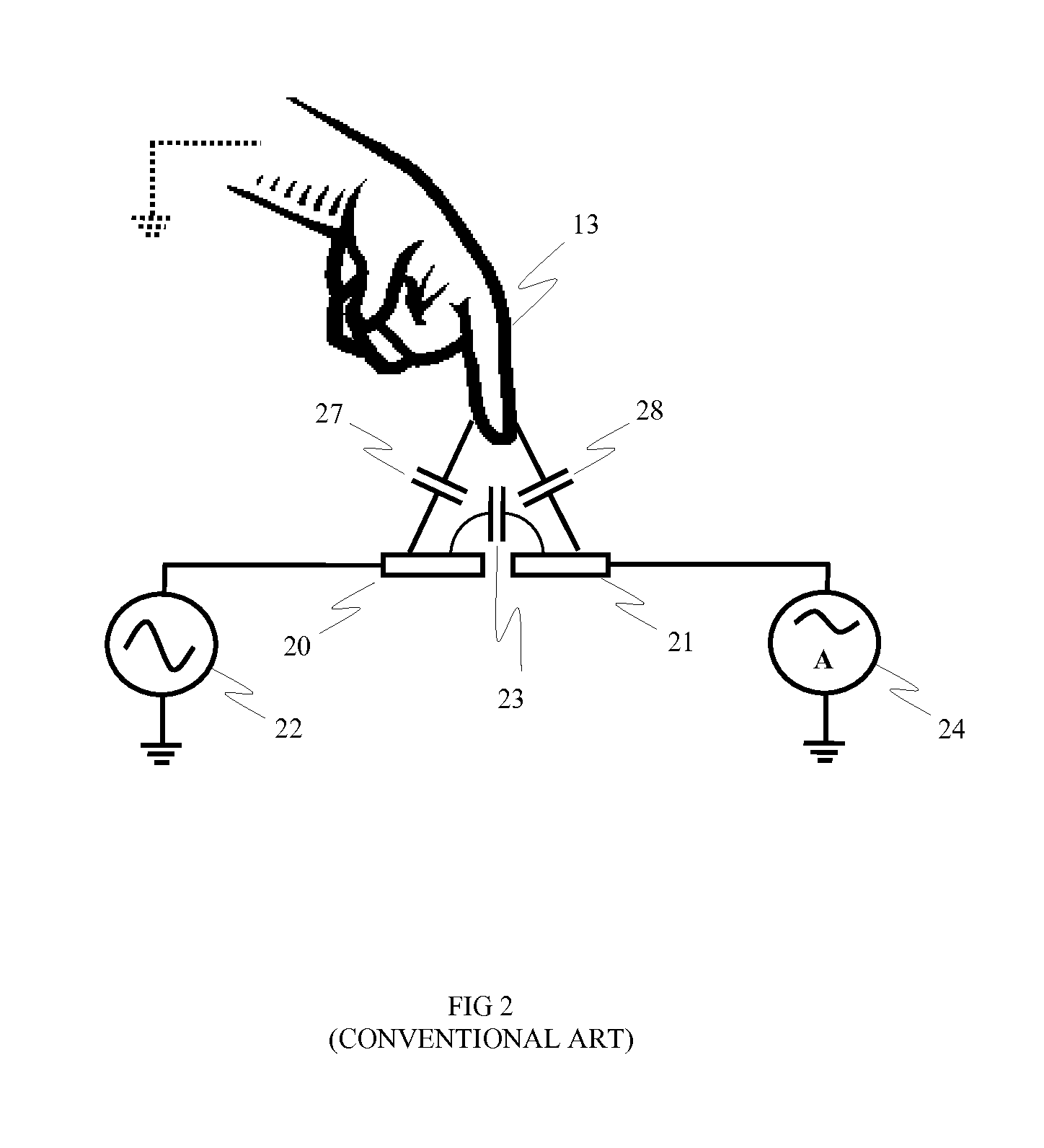Capacitive touch panel with a 'dual layer' force sensor
a capacitive touch panel and force sensor technology, applied in the field of capacitive touch panel devices, can solve the problems of inability to detect the force of touch input, significant limitations, and inability to detect multiple simultaneous touch input events on the surface capacitive type touch panel, and achieve the effect of minimizing the total load capacitance of the first drive electrode section
- Summary
- Abstract
- Description
- Claims
- Application Information
AI Technical Summary
Benefits of technology
Problems solved by technology
Method used
Image
Examples
second embodiment
[0113]In a second embodiment, the force sensing electrodes are arranged symmetrically around the touch sensing electrodes (SA) such that throughout the sensor matrix, the geometric centroids of the force measurement locations are coincident with the geometric centroids of the touch measurement locations. This ensures that the force and touch measurement results, obtained from a pair of adjacent force sensing electrodes and touch sensing electrodes, are the product of similar force and touch stimuli. This is advantageous, because it simplifies mathematical determination of the force and touch stimuli from the measurement results. An example of this alternative arrangement of the touch and force sensing electrodes is shown in FIG. 13, where electrical connections 1110 may be made between the two halves of each force sensing portion (SB).
third embodiment
[0114]In accordance with the present invention, the drive and sense electrodes are interdigitated. This involves distributing protrusions of the sense electrodes amongst protrusions of the drive electrodes, in order to maximise the distance over which the electrodes run adjacent and in close proximity to one another. This increases the fringing capacitance between the drive and sense electrodes, and therefore improves the touch sensitivity of the device. An interdigitated electrode geometry for the present invention is shown in FIG. 14. In FIG. 14, the drive electrode is again split into a first drive electrode section DA 1402 (which is used for proximity sensing only) and a second drive electrode section DB 1404 (which plays a role in the force measurement). The sense electrode comprises touch sensing electrodes SA 1406 and force sensing electrodes SB 1408. The force sensing electrodes SB 1408 lie predominantly beneath the second drive electrode sections DB 1404. For clarity, FIG. ...
first embodiment
[0115]As with the first embodiment, it may be desirable to make the force sensing electrodes SB 820 slightly smaller than the second drive electrode sections DB 1404. This reduces unintended coupling through fringing fields between the force sensing electrodes SB 1408 and the first drive electrode sections DA 1402, and therefore avoids unintentional capacitive loading of the first drive electrode sections DA 1402, allowing the touch measurement to be performed at high frequency.
[0116]This third embodiment is operated in the same manner as the first embodiment. The third embodiment may be advantageous over the previous embodiments, because the interdigitated geometry may provide a larger fringing capacitance between the first drive electrode sections DA 1402 and the touch sensing electrodes SA 1406, and may therefore offer a greater signal swing with a higher signal to noise ratio.
PUM
 Login to View More
Login to View More Abstract
Description
Claims
Application Information
 Login to View More
Login to View More - R&D
- Intellectual Property
- Life Sciences
- Materials
- Tech Scout
- Unparalleled Data Quality
- Higher Quality Content
- 60% Fewer Hallucinations
Browse by: Latest US Patents, China's latest patents, Technical Efficacy Thesaurus, Application Domain, Technology Topic, Popular Technical Reports.
© 2025 PatSnap. All rights reserved.Legal|Privacy policy|Modern Slavery Act Transparency Statement|Sitemap|About US| Contact US: help@patsnap.com



